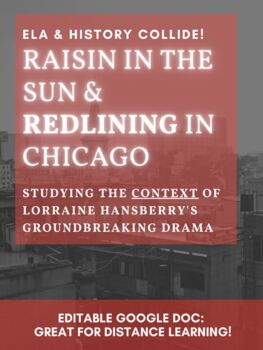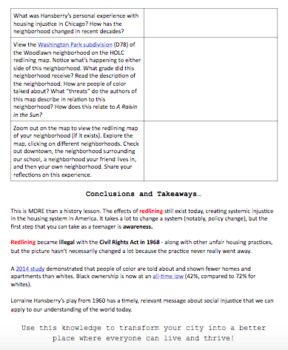Raisin in the Sun & Redlining in Chicago [EDITABLE GOOGLE DOC]
- Google Docs™
- Internet Activities

Description
When a lot of people think about injustices in society, they think of people causing harm to others personally, through their attitudes and actions. This does happen. However, much of the injustice in society is deeply rooted in historical systems that allow injustice to continue. Often, the systems that we think are designed to help people in society, like education, criminal justice, housing, and healthcare, are often the most riddled with oppressive practices and historical injustices. In A Raisin in the Sun, we witness the Younger family confronted by unjust housing practices on the Southside of Chicago in the 1950s, much of which can be attributed to the unjust system of redlining. This assignment walks students through the exploration of the historic practice of redlining in Chicago, guiding them through multiple online articles to provide context, and utilizing the interactive map redlining map designed by the University of Richmond. Best of all? This is an EDITABLE GOOGLE DOC designed during distance learning, so it is easy for students to access and understand! This lesson led to an extremely significant and critical discussion with my freshmen about systemic injustice, racism in America, redlining, and A Raisin in the Sun! I believe all high school students could benefit from this exercise.





